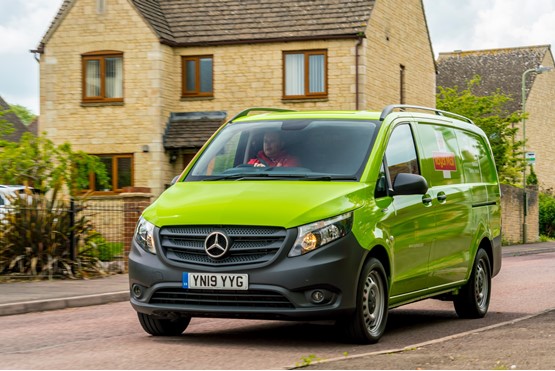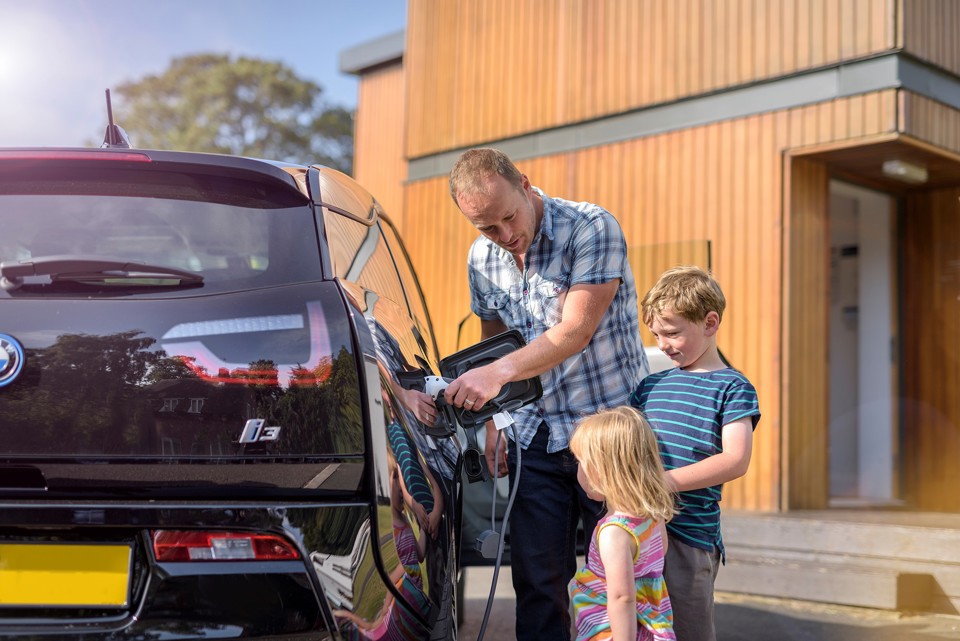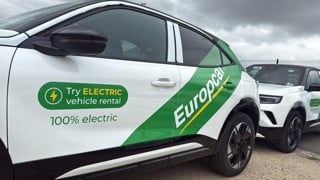This editorial feature appears in the February 20, 2020, issue of Fleet News and is sponsored by DriveTech
Providing electric vehicle (EV) training for drivers, even if it is simply a thorough handover, outlining how to charge the vehicle and how to drive it rather than a formal training session, is an essential part of a fleet’s electrification strategy.
There are a number of fairly small, but crucial, differences which mean that a driver who jumps straight into an EV from an internal combustion engine vehicle will not be getting the best out of it. These include greater instant acceleration, more deceleration when lifting off the accelerator and how they are refuelled. All have safety or efficiency ramifications.
Get it right and there are benefits for drivers who switch between vehicle types too, as Royal Mail found (see case study).
Read the sponsor's comment by Nick Butler, fleet director, DriveTech
“Ultra-low emission vehicles (ULEVs) are the future but, like any vehicle, they need to be driven in a way that makes the most of their capabilities,” says Mark Roberts, chief executive of in-cab driver training technology company Lightfoot.
“Driven aggressively, ULEV range falls significantly, and that has implications for the environment due to the energy required to generate the electricity in the first place.
“The more frequently the vehicle is charged, the larger the impact on the environment. So, while ULEVs may be cleaner on the surface of things, they are not without a footprint.”
These factors mean that targeted driver training can have a significant effect on the safety or efficiency of a fleet.
For example, 67 drivers received training over a three-month period through the Energy Saving Trust’s Ecodriving in EVs programme. Results showed a reduction in energy consumed of 16% and a resulting increase in range of 20%.
“It is about planning way ahead to help avoid sudden braking and harsh acceleration that can have such a draining effect on the battery,” adds Andy Wheeler, technical delivery director at TTC Group.
“There is also a real art to deceleration as it takes place a lot quicker than with conventional petrol models, helping to regenerate the battery – but you constantly need to be mindful that traffic following you might not expect such deceleration.”
What driver training is available for ULEVs?
As well as eco driving courses, driver training providers have already developed a range of programmes despite EV uptake still being in its early stages.
These include vehicle familiarisation, how to charge EVs and carry out appropriate vehicle checks, as well as courses focusing on safe driving.
They are also available in different formats, such as e-learning, classroom-based sessions, one-on-one in-cab sessions or workshops.
“Businesses that wish to transition to electric or hybrid fleet vehicles, or to encourage more uptake among their grey fleet, would do well to consider providing employees with a relevant course, especially if they’re encountering resistance to the change,” says Gary Bates, marketing manager at IAM Roadsmart.
As well as equipping drivers with the skills to drive an EV efficiently and safely, training can also help overcome range anxiety: consistently cited as one of the major obstacles to widescale EV uptake.
“One of the biggest challenges facing users of BEVs or PHEVs is range,” says Roberts. “Quite apart from the hassle of having to plan a journey to ensure that you can find a reliable fast charge point, if you do need to stop mid-journey, charging times can add significantly to the overall journey time. Even a rapid 30-minute charge can set you back.
“To help diminish the frequency of charges there is a simple solution, but it requires a change in driver mindset.
“Smoother driving is the answer. The trouble is, without guidance to show the driver how to drive more smoothly, it’s all too easy to be heavy on the pedal, draining range.”
When should training take place?
Ideally, drivers will receive EV training before they are handed the keys to their vehicle so they know how to get the most out of it before any bad habits set in.
This can also reduce risk by ensuring they are not distracted while driving by any new or unfamiliar technologies or controls.
It also enables them to make any necessary adjustments to their routine and working procedures prior to getting behind the wheel.
Bates adds: “If EV familiarisation training is not possible before delivery, then carrying out a familiarisation course at the point of delivery will still be of benefit.
“Employers have an important role to play. In our experience, individual drivers are often convinced that they do not need any additional training and may participate only if their employer makes it a requirement.
“Therefore, fleet managers and health and safety managers who understand the safety benefits of on-road training can have a real impact on road safety by encouraging the uptake of all forms of driver training.”
How should ULEV training be incorporated into a training strategy?
There is a cost to using any external training provider and fleet decision-makers must factor this into budgets.
“However, the financial benefits of EVs are there for all to see and these should offset the expense of e-learning or practical workshops,” says Wheeler.
“In addition, if all the drivers in your fleet are getting the most out of their vehicles, you have happy motorists and fuel-efficient cars that are reducing the firm’s carbon footprint.
“Traditionally, we have found there has been some resistance from certain motorists when it comes to the new technology so clear communication on the social, environmental and financial benefits should be set out from the start.”
ULEV training “dovetails” other forms of training, says Bates, and needs to be considered when implementing a training strategy.
“While EV training should not necessarily be considered as a replacement for other driver safety training, it is worth noting that eco-driving techniques are known to have benefits for safety, as they require drivers to use early observation and drive less aggressively,” he adds.
“Our driving for work course, for example, incorporates an eco-driving session which teaches efficient driving techniques that are
applicable to traditionally-powered vehicles, EVs and hybrids alike.
“A course of this kind, which is usually assigned to business drivers as part of a fleet risk management programme, can also be used to develop drivers’ skills as appropriate to their vehicle type.”
It is also important to monitor driver performance to provide training when necessary. This can be done through a good online fleet management system, or a risk management and licence checking portal, adds Bates.
These can be used to collate vehicle information that can be referred to when assigning relevant training courses according to vehicle type.
“Integral e-learning modules are an easy way to get drivers thinking about the importance of driver behaviour, and also to make sure their knowledge is up-to-date regarding things like clean air zone signage and safe charging procedures,” says Bates.
“Drivers can then be put forward for on-road training if their skills would benefit from further development.”
CASE STUDY: Royal Mail produces tailored training programme for EV driving

Royal Mail launched an electric vehicle driver training module before introducing its first Peugeot Partner Electric van at the end of 2017.
The organisation, which runs the UK’s largest fleet, is now part of Optimise Prime – the world’s largest commercial vehicle EV trial – which will see it, together with Centrica and Uber, put 3,000 EVs on the road.
Royal Mail currently operates 295 Mercedes-Benz eVito and Peugeot Partner Electric vans, and has put more than 1,000 drivers through the EV training in the past two years.
“From the start, we viewed the introduction of EVs as a positive change to workplace equipment that has been welcomed by employees,” says Mark Bromhall, road safety manager at Royal Mail.
“We recognise that there will be some key differences in the operation and driving styles between the EV vans and our more traditional fleet, therefore we have produced a tailored training programme that has already been rolled out to potential drivers.
“For example, few of our drivers have had experience of driving automatics before receiving the keys for the EVs.
“And then there are issues surrounding situations like driving through floodwater – all of which need to be clearly highlighted.”
The course includes modules for:
• Charging procedures
• Vehicle controls
• Automatic gearbox
• Performance awareness
• Awareness of other road users
• Regenerative braking – how it works
• Floodwater – understanding the potential consequences of driving through fords and deep standing water.
An unexpected benefit of launching the EV driver training module has been a 31% improvement in fuel efficiency while driving an internal combustion engine van.
Bromhall says: “The course makes drivers think about the most fuel-efficient way to drive – and that might be linked to harsh acceleration and breaking among other factors.
“The skills they learn will benefit them when they get behind the wheel of any vehicle for work or pleasure.”
Top tips for efficient electric vehicle driving
1. Conserve momentum
Reading the road and observing other road users further ahead allows a driver to reduce unnecessary acceleration and braking, which has a major affect on energy consumption and maximises regenerative braking.
2. Avoid harsh braking
Regenerative braking is a key feature of ULEVs which converts some of their movement (kinetic) energy back into electricity to recharge their batteries.
When a driver lifts their foot from the accelerator pedal, the electric motor acts as a generator and creates reverse torque to the front wheels, slowing the car down.
Energy recapture available through regenerative braking is around 10% through normal driving and up to 30% on descents.
3. Watch your speed
High speeds increase energy consumption in EVs more than they increase fuel consumption in conventional vehicles.
Typically, in a conventional vehicle, the most efficient speed is achieved at approximately 40-50mph, but the most efficient speed for EVs is lower than this.
4. Know your vehicle’s eco features
Many EVs come with a range of features that can ensure smarter and more efficient driving. Switching on the eco mode in an EV can reduce the draw of energy used by limiting the throttle and the power of some ancillary features such as air conditioning.
Some plug-in hybrid vehicles and range-extended EVs also have features that allow drivers to choose when they use battery charge or fuel, ensuring that drivers can opt to use the battery when it’s most efficient – for example, city driving.
Source: Energy Saving Trust
 The start of a new decade and a suitable moment to reflect on road risk and headline statistics.
The start of a new decade and a suitable moment to reflect on road risk and headline statistics.
Recorded road deaths and serious injuries, as reported by the Department for Transport, have remained reasonably static for the past 10 or so years – road deaths in the last official report for 2018 stated 1,784 killed.
Statistical trends on paper is one thing, but these are human lives and in a developed country with well-established highway codes and increasingly sophisticated vehicles this cannot still be acceptable; if this sad statistic was associated with another more singular transport tragedy – such as a rail crash or an aeroplane tragedy, there would be a huge amount of emotion, noise and uproar with demands for immediate change, but deaths on our roads just keep happening with an alarming consistency but with more passive comment; and perhaps most notably, provisional figures for 2019 (provisional stats published in November 2019 for year ending June 2019) indicate an increase, to 1,870 road deaths.
With the march towards driverless vehicles continuing, and an increasing assortment of gadgetry being added to the modern vehicle, most intended to improve road safety, are we in danger of de-skilling the human driver in the middle of it all? We have just published our latest whitepaper on ADAS (advanced driver assistance systems) asking whether they are all genuinely beneficial enhancements or sometimes actually more of a distraction.
Our most successful customers are those that take road safety seriously, recognising that the costs of collisions and poor driving are significant, not only to their business but to lives and wider society, and do something positive and progressive to reduce risk. Intelligent driver training programmes play a key role. Measurement is key.
Taking ownership for road safety is everyone’s issue. Driving is still very much a skill for life.






















Login to comment
Comments
No comments have been made yet.